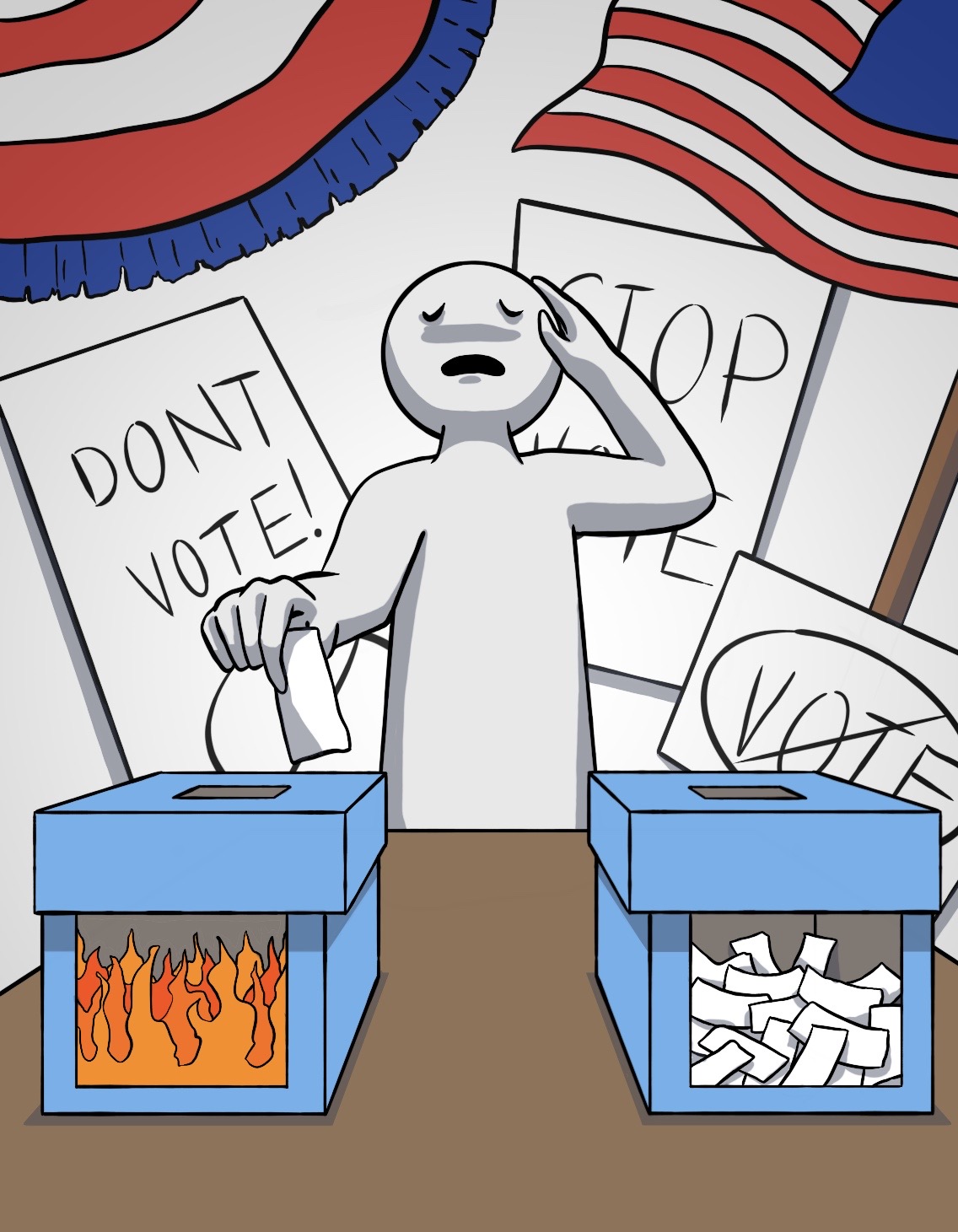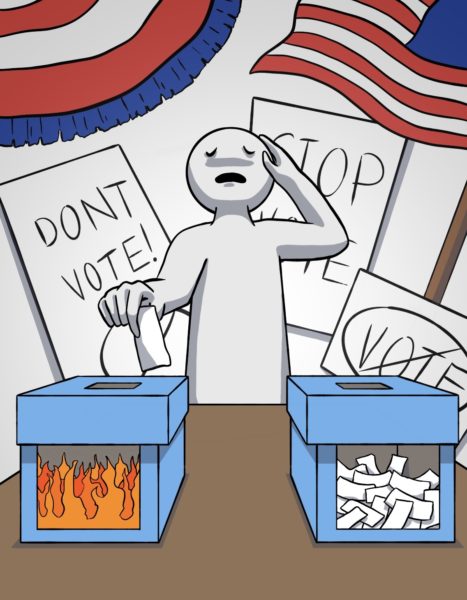

I remember going to the local voting center in 2016 with my mom to cast her ballot in the presidential election. We walked to a table with the list of registered voters. They searched for her name, but they couldn’t find her name due to a mistake in their system. As a result, she had to cast a provisional ballot — a way to vote in person when your name isn’t on the register.
While this specific instance was most likely a mistake, being left off of the register purposefully would fall under voter suppression. Voter suppression was a key issue in the 2020 election, and despite the blatant encouragement of it from President Donald Trump, some members of Congress and other government officials, they failed to stop the election from being won by President-elect Joe Biden in not only the electoral college, but the popular vote as well.
The fight between Democrats and Republicans has recently boiled down to Democrats trying to make it easier to vote, and Republicans trying to make it more difficult — especially for minority groups that vote against their conservative interests. For example, Trump opposed the expansion of mail-in voting this year.
In many counties, the shortage of election equipment and poll workers can end with incredibly long waits, and although you can still vote if you are in line before the polls close, this can lead to lost wages due to hours waiting in line to exercise their basic right to vote. According to a study from the University of California, Los Angeles, voters in Black neighborhoods waited in line 29% longer than voters in white neighborhoods.

Not providing an adequate amount of equipment to run the elections is voter suppression, and targets specific areas of the country, as people overseeing polling may control where equipment is concentrated based on who they support.
Throughout the 2020 election season, Trump has been consistently questioning the legitimacy of the results and spread a message, often through Twitter, to his followers that he would have won the election, if it were not stolen by the Democrats.
“He only won in the eyes of the FAKE NEWS MEDIA. I concede NOTHING! We have a long way to go. This was a RIGGED ELECTION!”
Tweets like this one have been flagged by Twitter for things such as spreading false information about election fraud. Trump has been accusing Democrats of trying to unlawfully steal the presidency since before Election Day, sparking fear and anger in his voters, resulting in some vote counting buildings closing.
Blaming others for failures is a norm in today’s politics, but by questioning the legitimacy of the election to this extreme level, Trump is essentially taking away the basic incentive to vote. If people believe that their vote has no impact, they won’t vote, and thus won’t have equal representation in Congress. Despite this being an indirect influence on the election, it is definitely still voter suppression, and should not be possible by the president of the U.S., or anyone else, no matter who they might be.
Since Election Day, Trump has been swapping between saying “stop the vote” and “count the votes” depending on which state he was winning in at the time. Despite most of these comments being on Twitter, and having no effect on what was actually counted, many Trump voters took it upon themselves to go outside these poll buildings and chant “stop the vote!” to fulfill Trump’s bid.
These comments are a blatant attempt to try and shift the vote in his favor, and while they aren’t turning out to be effective, they are riling up his supporters in an attempt to suppress his challenger’s votes, and only allow votes that support him through the system.
The fact that people can consider suppressing others’ right to vote in our country should be a telling sign that we’re doing something wrong, and a sign that it’s likely people are actively trying to suppress votes. With the flaws in our system, they’re probably succeeding. Many of these problems can be fixed through things such as equalizing voting systems throughout every county to ensure to the best of our abilities that everyone can exercise their right to vote, if they choose to.
Despite progress on increasing the accessibility of voting itself, there has also been a lot of backtracking that has made it harder to vote in some states. Unlike Chile or Hungary, where citizens are automatically put on voting rolls, or where not registering to vote is punishable by fines, the process of being added to the voting register in the U.S. is a long opt-in road.
If the U.S. picked up a voting registration system more similar to the ones stated previously, we would have higher voter turnout, and in turn, also have better representation of the country as a whole in the presidency, Congress and passed legislation. While this isn’t strictly voter suppression, by not having an automatic register, or mandatory register, we indirectly suppress people from voting who may not know how to register, or can’t take the time off of work to go find out or vote because they need the pay.
If we don’t find a way to equalize access to voting centers or voting registration, it will continue to be unfixed, and if ignored for enough time, it could even deteriorate further.



